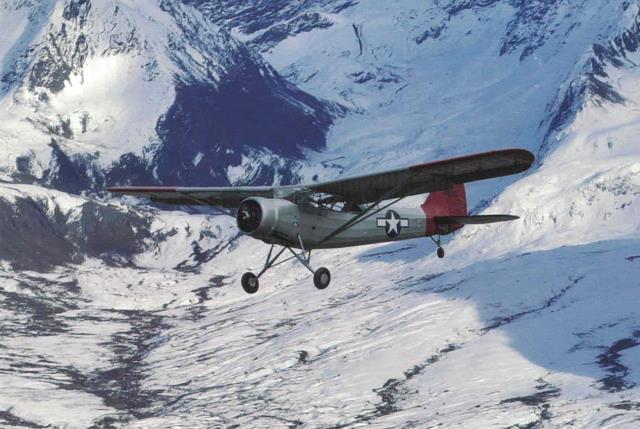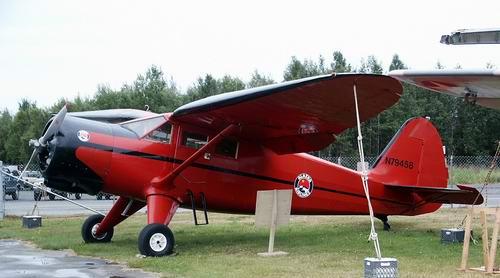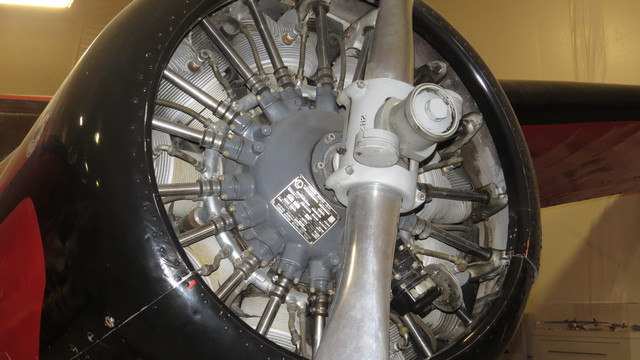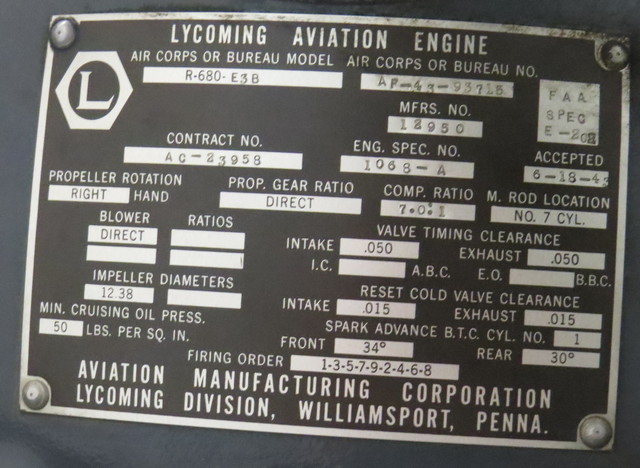AAM Lycoming Engines
| 1st Run | Brand | Name | Model | HP | Weight | Built | |
| 1929 | Lycoming | R-680 | 330 | 515 | > 26,000 | Stinson L-1 Vigilant | |
| 1929 | Lycoming | R-680-7 | 330 | 515 | Restoration Hangar | ||
| 1929 | Lycoming | R-680-13 | 330 | 515 | Blue engine stand Odom Hangar - ASM 92-21-17 | ||
| 1929 | Lycoming | R-680-13 | 330 | 515 | On pallet with cowl ring, Odom Hangar - 42170944 | ||
| 1929 | Lycoming | R-680-13 | 330 | 515 | Face down, on blocks, red pallet, NE corner Odom Hangar | ||
| 1929 | Lycoming | R-680-13 | 330 | 515 | yard, blue pallet | ||
| 1929 | Lycoming | R-680-E3B | 330 | 515 | Used on AAM 1944 Stinson V-77 Gullwing | ||
| 1953 | Lycoming | O-320 | 150 | 244 | Used on: Piper Supercub | ||
| 1954 | Lycoming | GO-480 | 340 | 498 | Used on: Helio Courier, Grumman Super Widgeon | ||
| 1955 | Lycoming | T53 | 1,100 | 688 | Used on: Huey UH-1 |
Lycoming Engines
Lycoming Engines is a major American manufacturer of aircraft engines. With a factory in Williamsport, Pennsylvania, Lycoming produces a line of horizontally opposed, air-cooled, four, six and eight-cylinder engines including the only FAA-certified aerobatic and helicopter piston engines on the market.
The company has built more than 325,000 piston aircraft engines and powers more than half the world's general aviation fleet, both rotary and fixed wing.
Lycoming R-680 Engine
Lycoming R-680 |
||
| First Run: | 1929 | |
|---|---|---|
| Number Built: | > 26,000 | |
| General Characteristics | ||
| Type: | Nine cylinder air-cooled radial | |
| Bore: | 4 5⁄8 in | 117 mm |
| Stroke: | 4 1⁄2 in | 114 mm |
| Displacement: | 680 cu in | 11.15 l |
| Length: | 37.5 in | 953.1 mm |
| Diameter: | 43.5 in | 1,104 mm |
| Dry weight: | 515.46 lb | 233.9 kg |
| Components | ||
| Valvetrain: | 1 inlet and 1 exhaust valve per cylinder | |
| Fuel system: | Single-barrel Carburetor | |
| Fuel type: | 87 octane | |
| Oil system: | Full pressure type | |
| Cooling system: | Air-cooled | |
| Performance | ||
| Power output: | 330 hp at 2,300 rpm | 246 kW |
| Compression ratio: | 7:1 | |
| Power-to-weight ratio: | 0.64 hp/lb at cruising rpm | |
Lycoming R-680-7
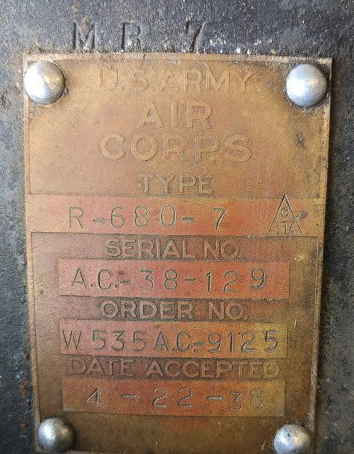
Lycoming R-680-13
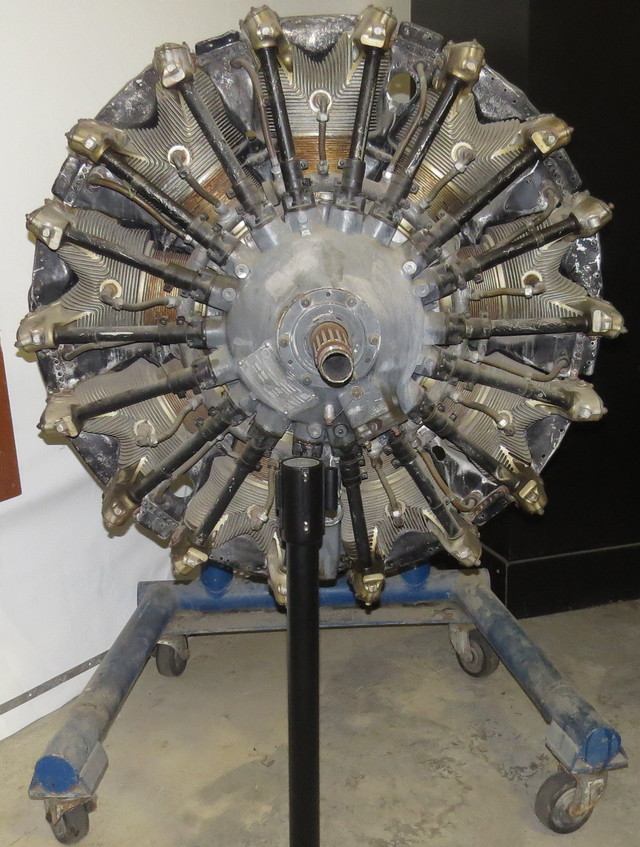
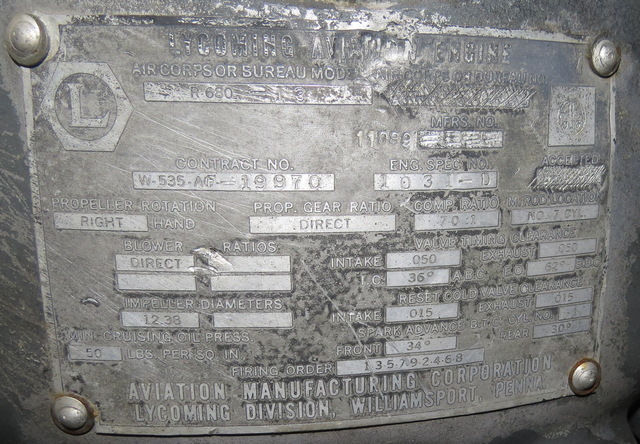
Lycoming R-680-13
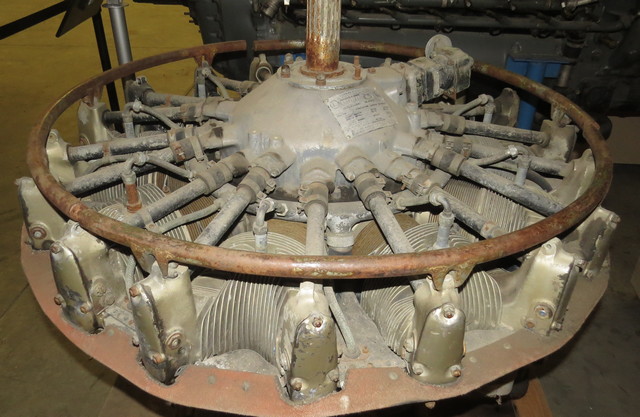
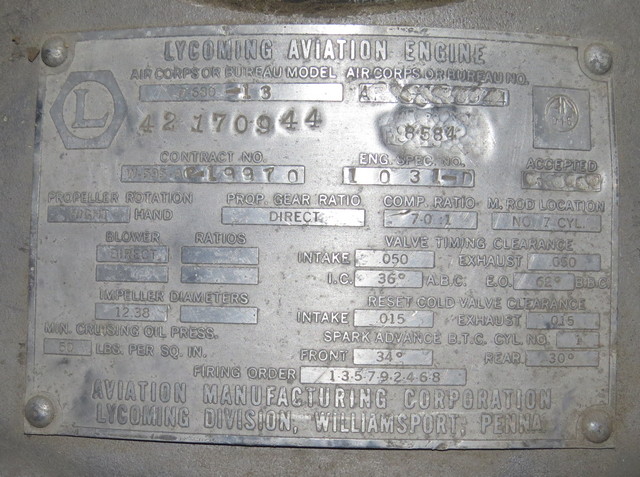
Lycoming R-680-13
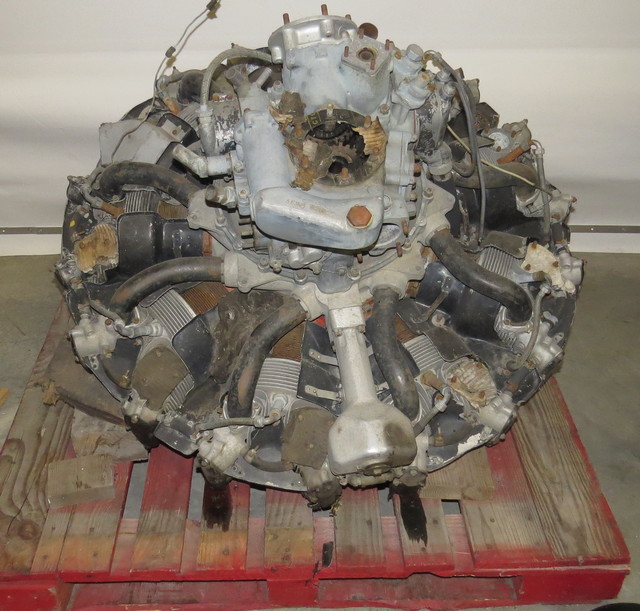
Lycoming R-680-13
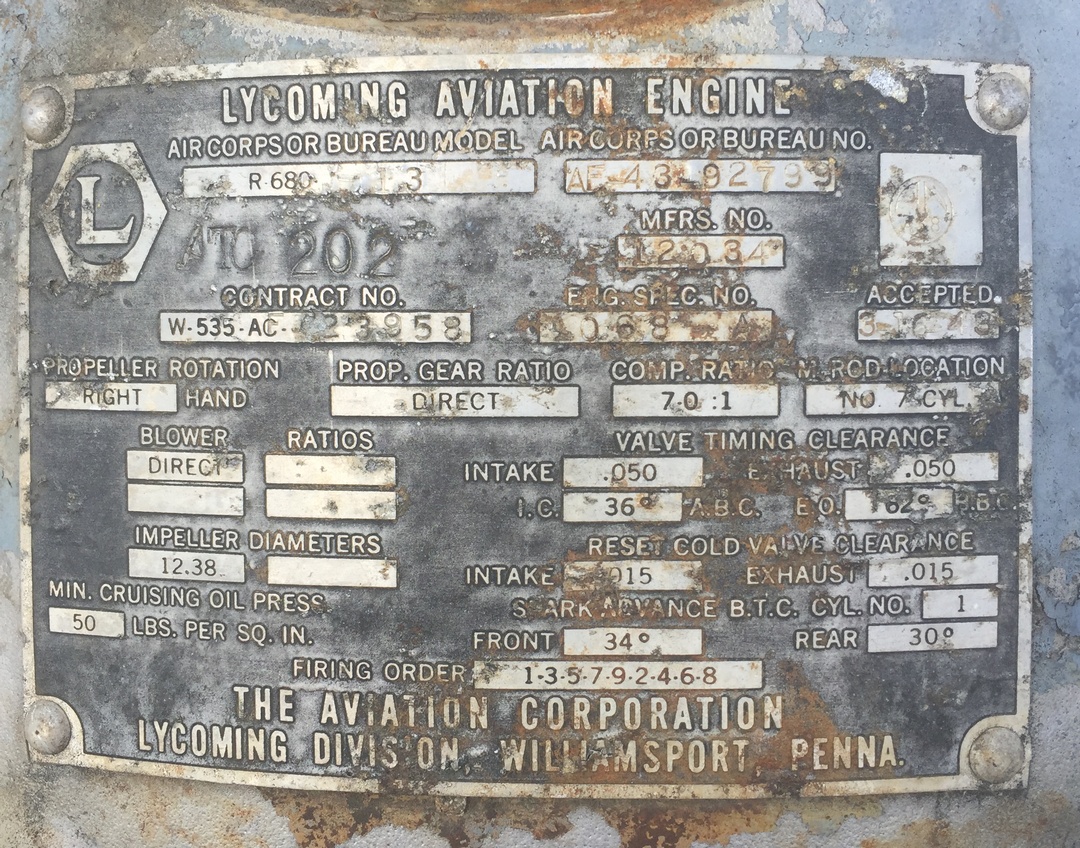
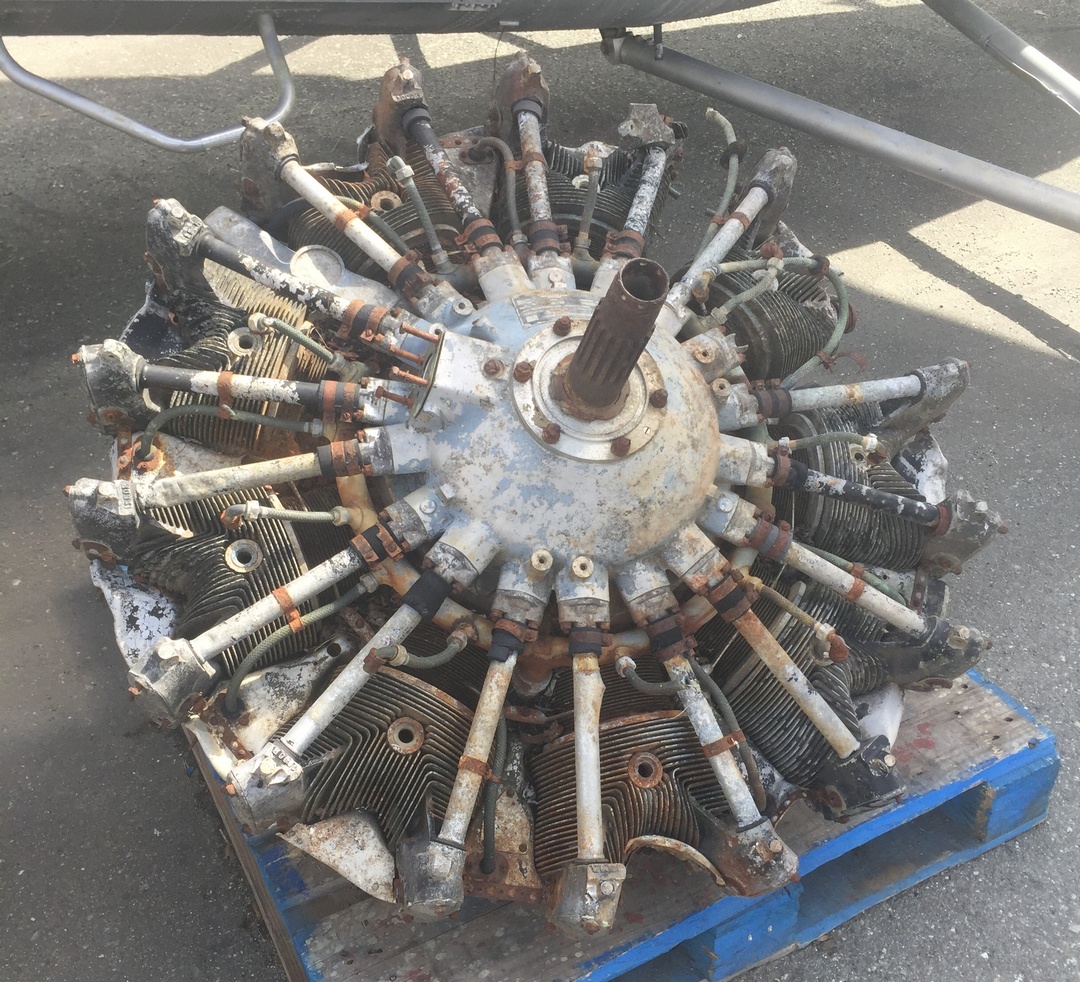
Lycoming O-320
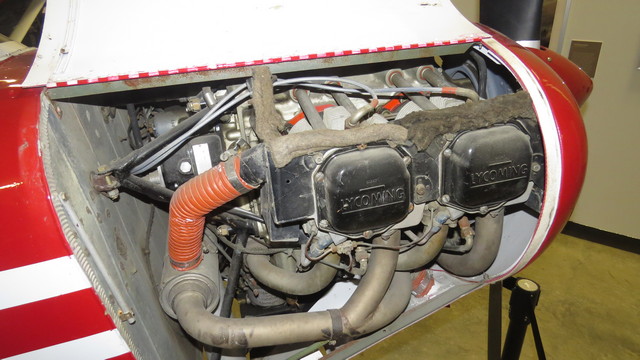
The Lycoming O-320 is a large family of 92 different normally aspirated, air-cooled, four-cylinder, direct-drive engines commonly used on light aircraft such as the Cessna 172 and Piper Supercub. Different variants are rated for 150 or 160 horsepower (112 or 119 kilowatts). As implied by the engine's name, its cylinders are arranged in horizontally opposed configuration and a displacement of 320 cubic inches (5.24 L).
Used on: Piper Supercub
Lycoming O-320-A1A |
||
| First Run: | 1953 | |
|---|---|---|
| Number Built: | ||
| General Characteristics | ||
| Type: | 4-cylinder air-cooled horizontally opposed piston engine | |
| Bore: | 5.125 in | 130.18 mm |
| Stroke: | 3.875 in | 98.43 mm |
| Displacement: | 319.8 cu in | 5.24 l |
| Dry weight: | 244 lb | 111 kg |
| Components | ||
| Valvetrain: | 1 inlet and 1 exhaust overhead valves per cylinder | |
| Fuel system: | Updraft Carburetor | |
| Fuel type: | Minimum grade of 80/87 avgas | |
| Oil system: | Wet sump | |
| Cooling system: | Air-cooled | |
| Performance | ||
| Power output: | 150 hp | 112 kW |
| Compression ratio: | 7:1 | |
| Power-to-weight ratio: | 0.61 hp/lb | 0.99 kW/kg |
Lycoming GO-480
The Lycoming O-480 is a family of six-cylinder, horizontally opposed fixed-wing aircraft engines of 479.6 cubic inch (7.86 l) displacement, made by Lycoming Engines. The engine is a six-cylinder version of the four-cylinder Lycoming O-320.
All engines have an additional prefix preceding the 480 to indicate the specific configuration of the engine. Although the series is known as the “O-480”, they’re the only geared engines in the series.There are also numerous engine suffixes, denoting different accessories such as different manufacturers' carburetors, or different magnetos.
GO-480 - Normally aspirated Opposed engine, equipped with a carburetor and Gearbox at the front end of the crankshaft to drive the propeller at a lower RPM than the engine.
Used on: Helio Courier, Grumman Super Widgeon
Lycoming GSO-480-A1A6 |
||
| First Run: | 1954 | |
|---|---|---|
| Number Built: | ||
| General Characteristics | ||
| Type: | Six-cylinder air-cooled geared supercharged horizontally opposed engine | |
| Bore: | 5.125 in | 130 mm |
| Stroke: | 3.875 in | 98 mm |
| Displacement: | 479.6 cu in | 7.86 l |
| Dry weight: | 498 lb | 225.9 kg |
| Components | ||
| Valvetrain: | 1 inlet and 1 exhaust overhead valves per cylinder | |
| Supercharger: | 11.27:1 ratio, providing 48" Hg (1.6 atm / 8.8 psi) manifold pressure at sea level at maximum power | |
| Fuel type: | 100 octane rating gasoline | |
| Cooling system: | Air-cooled | |
| Reduction gear: | 77:120 (.642:1) | |
| Performance | ||
| Power output: | 340 hp at 3,400 rpm at sea level | 253.5 kW |
| Compression ratio: | 7.3:1 | |
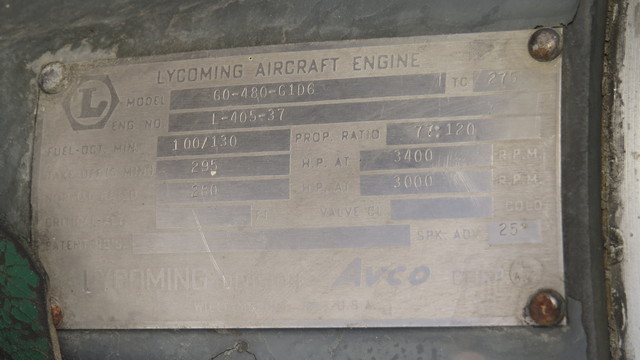
1955 Lycoming T53
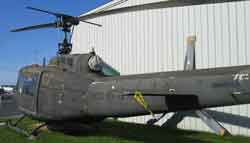
Turboshaft aircraft engine
The Lycoming T53, (company designation LTC-1) is a turboshaft engine used on helicopters and (as a turboprop) fixed-wing aircraft since the 1950s.
It was designed at the Lycoming Turbine Engine Division in Stratford, Connecticut by a team headed by Anselm Franz, who was the chief designer of the Junkers Jumo 004 during World War II.
A much larger engine, similar in overall design, became the Lycoming T55. Both engines are now produced by Honeywell Aerospace.
Used on: Huey UH-1
Lycoming T53 |
||
| First Run: | 1955 | |
|---|---|---|
| Number Built: | ||
| Type: | Turboshaft | |
| Length: | 58.4 in | 1,483 mm |
| Diameter: | 23 in | 584 mm |
| Dry Weight: | 688 lbs | 312 kg |
| Components | ||
| Compressor: | 5-stage axial compressor and 1-stage centrifugal compressor | |
| Combustors: | Reverse flow | |
| Turbine: | 2-stage high pressure turbine; 2-stage power turbine | |
| Performance | ||
| Maximum Output Power: | 1,451 shp | 1,082 kWN |
| Overall pressure ratio: | 7.4 | |
| Air mass flow: | 10.7 lb/s | 4.853 kg/s |
